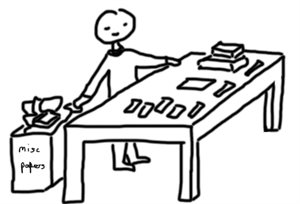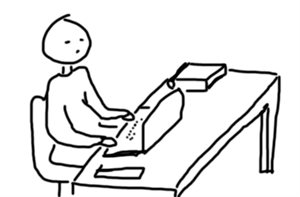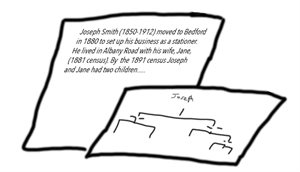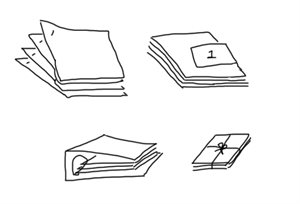Helping the process
Once you have decided that Bedfordshire Archives is the appropriate place for your material and the terms under which you would like to offer it to us you can help us to make the processing of the material much easier. Material that is accepted by Bedfordshire Archives needs to be put into order and described on a catalogue before researchers can find it and use it. Without your help this can take us a very long time to do. Following the steps below will help speed this process up and will be greatly appreciated.
1. Decide whether what you are offering is to be part of a collection we already hold – that is;
- Have you donated/deposited material before?
- Is what you are offering part of the official record of the creating body, such as a parish council, for which we already have a collection? Or,
- Should it should be kept in a separate collection of its own because it is something altogether different.
2. Organise the material

If we already have a related collection you may be able to follow the way that collection is arranged to organise the material you have (see case study below)
If what you are offering is completely new then put it into a logical order. This could be groups by subject, or type of material, family groups or by date. The order that is appropriate often depends on the type and quantity of material involved.
Within each group of things such as minutes or diaries arranging the material by date is usually best.
Case study
Aunt Sally was a leading light in the local branch of the Women’s Institute and kept a lot of their minute books, programmes and photographs, which you now wish to place in the archives. You do a search of our catalogues and find that Bedfordshire Archives has a very large collection from Bedfordshire Women’s Institutes (reference X939) and each institute has already been allocated a reference even if they have yet to deposit any material with us. Within each institute the records are arranged in a particular order to make the records easy to find. You arrange Aunt Sally’s collection into the headings already allocated by the archives service.
3. Sort out duplicates

If you have exact copies of something just keep the one in best condition. If you have a clean copy and an annotated copy then keep both.
By making a search of our online catalogue http://bedsarchivescat.bedford.gov.uk/ you will be able to see descriptions of most of the items that we hold - useful for checking if we have already got something – a printed sale catalogue for example. We do not usually accept duplicates of things we already hold, but there are exceptions to this, such as context within a collection or condition. Let us know if anything you have duplicates something we already have quoting the reference number found on the catalogue and we can advise accordingly.
4. Make a list of the records

Assume we know nothing! The information you give helps us to create a catalogue that is available for researchers so the more detail you can give us the better. For example while we always like to look at photographs if we don’t know where it is, or who it is of, then we are unlikely to accept them. You might know who ‘Mum and Dad’ are, but we don’t so adding people’s full names means we are able to record this information.
We also need to know dates - if you don’t know then give us your best guess. If the letters that Aunt Bessie sent to her sister are undated but you know that she sent them while living in Bedfordshire in the 1980s then tell us this information.
Some material might be of a sensitive nature; it could be that it includes contact information or indiscrete diary entries. Please highlight this on your list. We can still accept the material, but may decide to place a closure on the records in line with the current data protection legislation. Do not worry if you are unsure as to what this means, we can make a detailed examination of the material and decide for ourselves. We can also discuss data control responsibilities should this be relevant.
Use a soft pencil (2B is best) to mark references on the items coinciding to your list.
5. Describe the background to the material and how you got it.

One of the most important things for anyone using records for research is to know the background – why was it produced, who produced it, where has it been? The answers to these questions indicate how reliable the information might be.
If the collection is that of a family a simple family tree helps us a great deal. Don’t worry if you don’t know it all just tell us what you can.
6. Remove metal clips and plastic sleeves

Paperclips and staples tend to rust and rust damages paper. Plastic tends to decay and become brittle and it also adds unnecessary bulk to the material. Carefully removing these fasteners protects the paper from them but it also stops piles of paper from being lop sided and bulky. Of course if you remove them you end up with a lot of loose papers so you will want some way of keeping them together. A simple fold of paper is the best method and it means you can also write a pencil note on the enclosing paper as to the contents or the number of the papers on your list.
If things are in ring binders or lever arch files remove them from the file and tie the papers together either using the punched holes or just in a bundle.